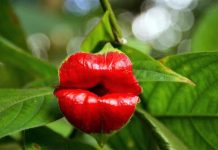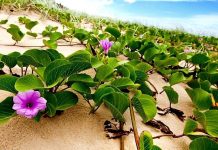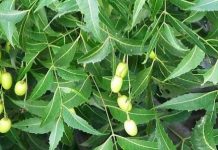Family: Capparaceae
Synonym:Capparis crassifolia Kurz
Bengali/Vernacular name: Biralnokha, Kalkera, Birazarilata, Asarilata, Kalookra, Kalukoan.
Tribal name: Kya-maw-sthei (Rakhaing).
English name: Ceylon caper, Indian caper, Caper berry.
Description of the plant: A climbing and spiny shrub, 3 or more m tall. Leaves and branches are hairy. Spines are short, sharp, recurved and subtending each leaf or branch. Leaves oblong to oblong-ovate, 8-17 cm long, leathery, shiny, with a rounded base, pointed at the tip. Flowers arranged in supra-axillary rows, white. Fruit a berry, ellipsoid or globose, pericarp woody.
Plant parts used: Leaf, stem, root.
Herbal uses: A paste made with the leaves and stems of the plant is applied to the biting place to treat snake bite.
Decoction prepared from the root-bark of the plant is used for vomiting, abdominal pain, and gastric irritation treatment.
Paste prepared from the plant is used for the treatment of boils, swelling, piles, rheumatism, diabetes, and colic.
Juice extracted from the leaves and stems of the plant is advised to take with cup of fresh goat milk for curing cough and cold.
Decoction prepared from the leaves of the plant is used for the treatment of syphilis.
The plant is used to treat small pox, cholera, colic, neuralgia, sores, pneumonia, and pleurisy.
Distribution: It is found in Bagerhat, Chittagong, Dhaka, Jessore, Jhalakati, Kushtia, Mymensingh, Naogaon, Pabna, Rajshahi, and Tangail districts.
Is this plant misidentified? If yes, please tell us….














